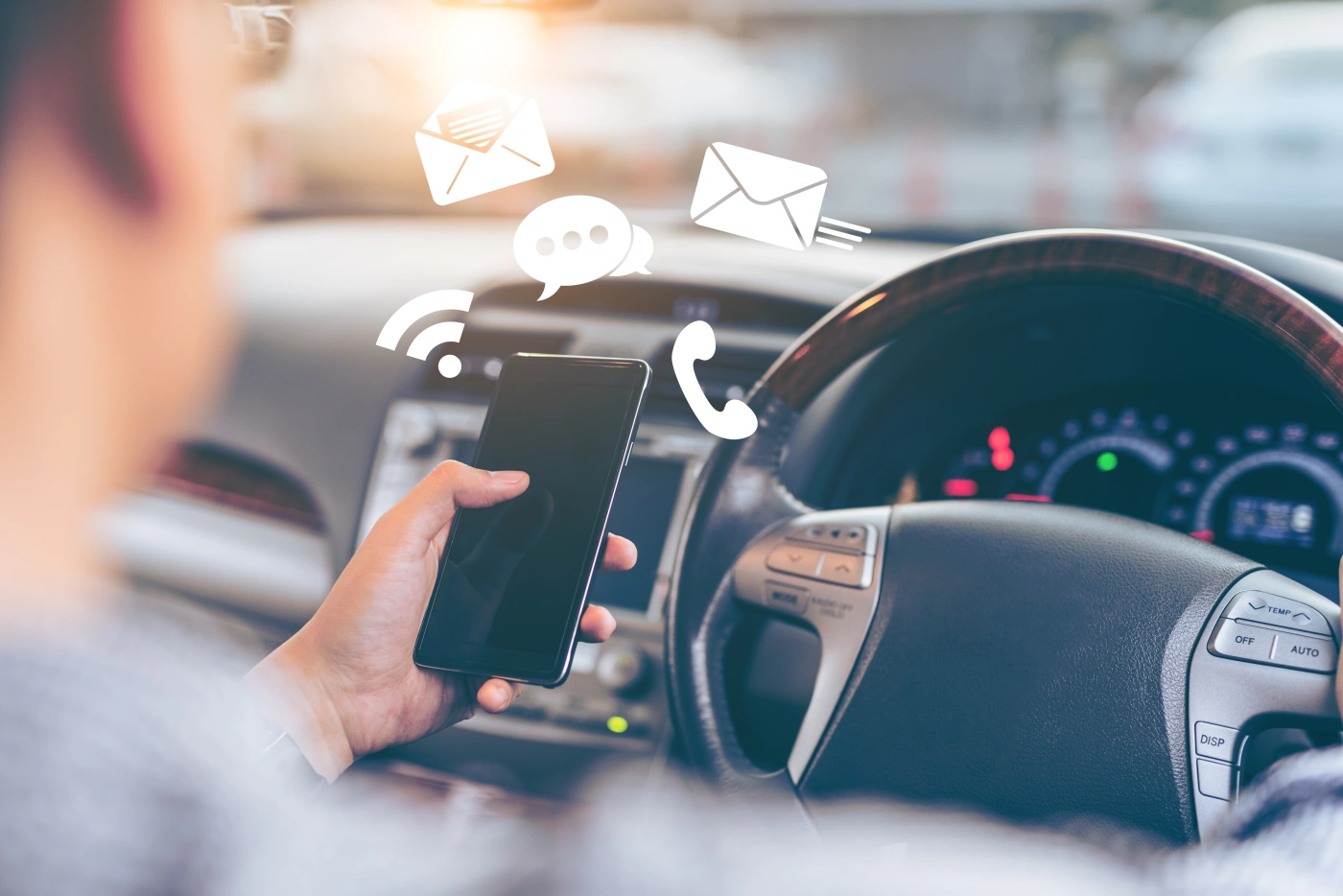Texting while driving greatly elevates accident risks — it makes you 23 times more likely to crash compared to focused driving. This emphasizes the urgent need for a thorough examination of its impact on driving safety. The dangers of texting behind the wheel are well-documented and understanding these risks can lead to safer practices on the road. With various solutions available to mitigate these dangers, prioritizing safety is vital to prevent accidents and protect lives. Further insights into the in-depth analysis can provide valuable information on safeguarding yourself and others while driving.
Texting and Driving Statistics
Texting while driving greatly increases the risk of accidents. Statistics reveal that drivers are 23 times more likely to crash when texting behind the wheel. This alarming figure highlights the danger posed by this common form of distracted driving. In fact, texting while driving is considered even more dangerous than driving under the influence of alcohol. Research shows that sending or reading a text takes your eyes off the road for an average of 5 seconds. At 55 mph, this is equivalent to driving the length of a football field blindfolded. It's no wonder that texting is a leading cause of accidents among drivers, especially younger ones. Shockingly, 11 teenagers die every day due to texting while driving incidents. These statistics serve as a stark reminder of the severe consequences that can result from this reckless behavior. Remember, no text message is worth risking your safety or the safety of others on the road.
Cognitive Distractions Behind the Wheel
Considering the significant risks highlighted by texting and driving statistics, it is essential to understand the impact of cognitive distractions behind the wheel. When your mind is not fully focused on driving, you put yourself and others at risk. Cognitive distractions can impair your ability to react quickly and make sound decisions while on the road.
- Internal Conversations: Engaging in deep or emotional thoughts can divert your attention from the road ahead.
- Daydreaming: Allowing your mind to wander can prevent you from noticing important traffic cues.
- Multi-tasking: Trying to perform other mental tasks while driving can overload your cognitive abilities, making it harder to concentrate on the road.
These distractions may seem harmless but can have severe consequences when operating a vehicle. Stay focused on the task at hand, prioritize driving, and avoid engaging in activities that take your mind off the road. Your safety and the safety of others depend on your full attention while driving.
Real-World Consequences of Texting
In today's fast-paced world, the real-world consequences of texting while driving are alarmingly prevalent and dangerous. When you opt to text behind the wheel, you greatly enhance the risk of accidents. Statistics show that texting while driving makes you 23 times more likely to crash. These crashes can lead to severe injuries or even fatalities. Imagine the impact not only on your life but also on the lives of others involved. Apart from the physical harm, there are legal repercussions as well. If caught texting while driving, you could face fines, license suspension, or even jail time in some cases. Additionally, the guilt and emotional distress from causing harm to someone else can be overwhelming. The financial burden of medical bills, car repairs, and increased insurance rates adds to the already heavy consequences. Remember, a simple text message is never worth risking your life or the lives of others on the road.
Risks Associated With Texting While Driving
Engaging in distracted driving by using your phone greatly increases the chances of accidents and jeopardizes your safety on the road. When you choose to text while driving, you are putting yourself and others at risk due to the following reasons:
- Visual Distraction: Looking down at your phone to read or type messages takes your eyes off the road, making you unaware of sudden changes in traffic or obstacles.
- Manual Distraction: Typing a message requires you to take at least one hand off the steering wheel, reducing your ability to react quickly in case of an emergency.
- Cognitive Distraction: Your focus shifts from driving to the conversation on your phone, impairing your decision-making skills and reaction time while on the road.
Solutions to Mitigate Texting Dangers
To enhance driving safety and reduce the risks associated with texting while driving, implementing technological solutions is vital. One effective solution is the use of smartphone apps that automatically enable a 'Do Not Disturb' mode when the vehicle is in motion. These apps can block notifications, calls, and messages, minimizing distractions for the driver. Another helpful tool is hands-free technology, such as voice-activated commands for texting or calling, allowing you to keep your hands on the wheel and eyes on the road. Additionally, some vehicles are equipped with advanced safety features like lane departure warning systems and automatic emergency braking, which can help prevent accidents caused by distracted driving. Educating drivers about the dangers of texting while driving and promoting safe driving habits through awareness campaigns are also vital steps in mitigating texting dangers. By utilizing these technological solutions and promoting safe practices, we can work towards a safer driving environment for everyone on the road.
Prioritizing Safety on the Roads
Prioritize the safety of yourself and others on the roads by staying focused and alert while driving. Avoid distractions such as texting, eating, or using electronic devices. Always remember that safety should be your top priority when behind the wheel.
- Keep your eyes on the road at all times.
- Use hands-free devices if you need to make a call.
- Take regular breaks on long journeys to stay refreshed and focused.
Frequently Asked Questions
Can Using Voice-To-Text Technology While Driving Be Just as Dangerous as Manually Texting?
Using voice-to-text technology while driving can be just as dangerous as manually texting. Your attention is diverted, leading to delayed reactions. Both methods pose risks. Stay focused on the road to guarantee safety.
How Do Different Age Groups Compare in Terms of Texting While Driving Habits and Related Accidents?
When it comes to texting while driving habits and related accidents, different age groups show varying tendencies. Younger individuals often engage more in texting while driving, leading to increased risks of accidents compared to older drivers.
Are There Any Studies That Show the Long-Term Effects of Texting While Driving on a Person's Cognitive Abilities?
Studies have revealed the long-term effects of texting while driving on cognitive abilities. Your attention span, reaction time, and decision-making skills can suffer, increasing the risk of accidents. Stay safe by avoiding distractions behind the wheel.
What Role Does Peer Pressure Play in Influencing Individuals to Text While Driving?
When you're behind the wheel, peer pressure can push you to text and drive. Friends or passengers might expect quick replies, but remember, safety comes first. Set boundaries and prioritize everyone's well-being.
Is There a Correlation Between the Use of Social Media While Driving and an Increased Risk of Accidents Compared to Texting?
When you use social media while driving, the risk of accidents increases compared to texting. It diverts your attention from the road even more, making it dangerous for you and others on the road.
Conclusion
To sum up, texting while driving poses serious risks to road safety. The statistics show the dangers, cognitive distractions hinder focus, and real-world consequences can be devastating. To mitigate these risks, it is important to prioritize safety on the roads and avoid texting while behind the wheel. By staying focused and attentive, we can all contribute to creating a safer driving environment for everyone. Drive safe, avoid distractions, and prioritize safety above all else.



